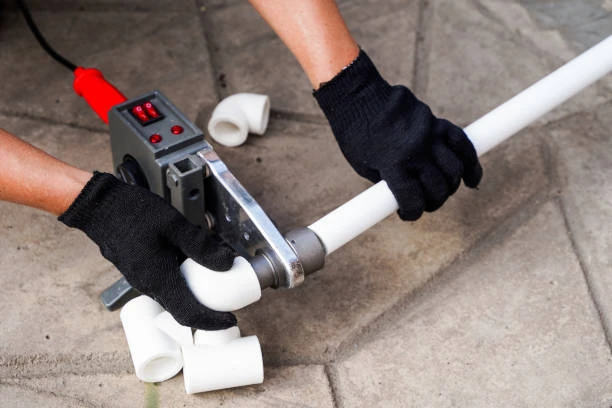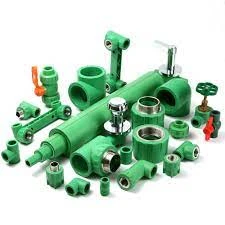Introduction
The world of PPR (Polypropylene Random Copolymer) pipes and fittings is undergoing a transformative phase. As infrastructure demands rise, manufacturers are stepping up to set new standards in quality, efficiency, and sustainability. In this article, we’ll explore the innovative advancements in PPR Pipe and fittings manufacturing, the current market landscape, and the future trends that are shaping the industry.
Understanding PPR Pipes and Fittings
Definition and Uses
PPR Pipe are widely used for water supply systems, heating, and even industrial applications. They offer durability and resistance to corrosion, making them an excellent choice for various environments.
Material Composition
The unique composition of PPR materials enables high-performance characteristics, such as excellent thermal insulation and chemical resistance. This ensures that PPR pipes can handle both hot and cold water effectively.
Current Market Landscape
Global Market Trends
The global market for PPR pipes is witnessing substantial growth, driven by increased construction activities and a rising focus on sustainable plumbing solutions.
Regional Insights: Focus on Saudi Arabia
In Saudi Arabia, the demand for PPR pipes is particularly high due to ongoing infrastructure projects and a growing population. This has led to an increased emphasis on quality and innovation within the local manufacturing sector.
Technological Advancements in Manufacturing
Innovative Production Techniques
Manufacturers are embracing new production techniques to enhance the quality and efficiency of PPR pipe manufacturing. Techniques such as multi-layer extrusion and advanced molding processes are becoming the norm.
Automation in Manufacturing Processes
The introduction of automation in manufacturing processes is revolutionizing the industry. Automated systems improve precision and reduce waste, allowing for a more streamlined production line.
Quality Control Standards
Importance of Quality in PPR Pipes
Quality is paramount in PPR pipe manufacturing. Poor-quality pipes can lead to leaks, failures, and costly repairs. As a result, manufacturers are implementing rigorous testing and quality assurance measures.
Regulatory Compliance and Certifications
Adhering to international standards and obtaining relevant certifications is critical. This not only ensures product reliability but also enhances consumer trust.
Sustainability in Manufacturing
Eco-Friendly Practices
Sustainability is a key focus in modern manufacturing. Many companies are adopting eco-friendly practices, such as using recycled materials and reducing energy consumption during production.
Recycling and Waste Management
The potential for recycling PPR pipes after their lifespan offers a sustainable solution to waste management. Manufacturers are developing processes to ensure that end-of-life products can be effectively repurposed.
Key Players in the Market
Major Manufacturers
Companies like Al Munif Pipes and Saudi Plastic Products are leading the way in setting high standards for PPR pipes and fittings. Their commitment to quality and innovation is shaping the industry.
Case Studies of Leading Companies
Looking at successful case studies from these companies provides insights into best practices and the challenges they overcame to maintain their market leadership.

Challenges Facing the Industry
Supply Chain Issues
Like many industries, PPR pipe manufacturing faces supply chain challenges. Fluctuating raw material prices and delays can impact production schedules and costs.
Competition from Alternative Materials
While PPR pipes are widely favored, competition from alternative materials such as PVC and HDPE presents a challenge. Manufacturers need to highlight the unique benefits of PPR to maintain market share.
Future Trends and Innovations
Predictions for Market Growth
The PPR pipes market is expected to grow significantly in the coming years, driven by ongoing infrastructure projects and rising demand for sustainable solutions.
Emerging Technologies in Production
Innovations such as smart manufacturing and Internet of Things (IoT) applications in production processes are likely to enhance efficiency and quality control, setting new industry benchmarks.
Consumer Awareness and Education
Importance of Educating the Market
As PPR pipes gain popularity, educating consumers about their benefits and applications becomes crucial. Manufacturers and retailers should provide clear information to help consumers make informed decisions.
Resources for Consumers
Online resources, brochures, and workshops can help raise awareness about PPR products and their advantages over traditional materials.
Conclusion
The landscape of PPR Pipe and fittings manufacturing is rapidly evolving. With a focus on innovation, sustainability, and quality, manufacturers are setting new standards that benefit both the industry and consumers. As we look to the future, the potential for growth and advancements in this sector is exciting, promising a more efficient and eco-friendly approach to plumbing solutions.
FAQs
What are PPR pipes and fittings used for?
PPR pipes and fittings are used primarily for water supply, heating systems, and various industrial applications due to their durability and resistance to corrosion.
How are PPR pipes manufactured?
PPR pipes are manufactured using advanced extrusion techniques, often involving multi-layer production processes for enhanced performance.
What are the advantages of using PPR over other materials?
PPR pipes are lightweight, resistant to corrosion, and have a long lifespan, making them a superior choice compared to traditional materials like PVC.
How does sustainability affect PPR pipe production?
Sustainability practices, such as recycling and eco-friendly manufacturing processes, are becoming increasingly important in PPR pipe production, helping reduce environmental impact.
What should consumers look for when choosing PPR products?
Consumers should look for certifications, quality assurance, and the manufacturer’s reputation when selecting PPR pipes and fittings to ensure reliability and performance.


















